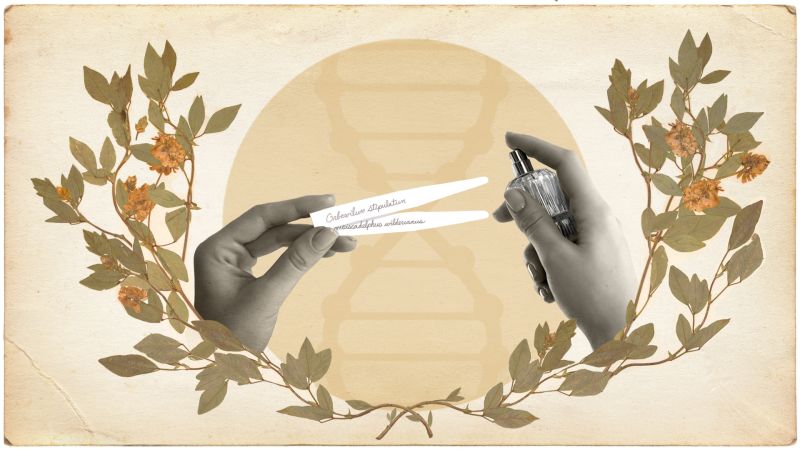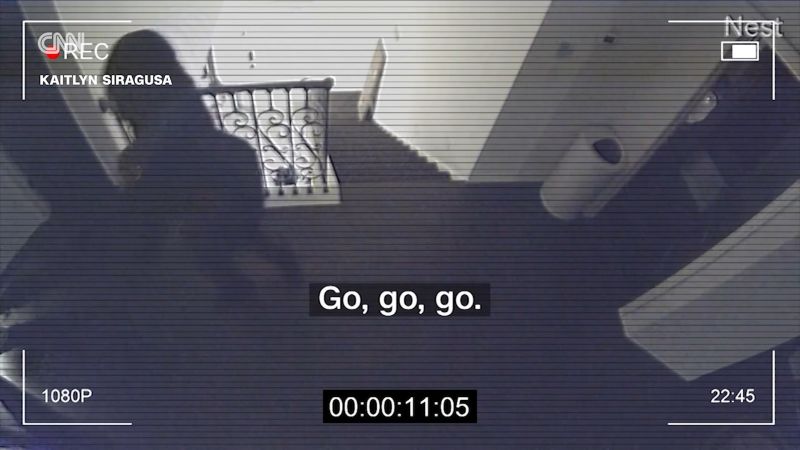Extinct Flower Fragrances: The Science And Art Of Scent Recreation

Welcome to your ultimate source for breaking news, trending updates, and in-depth stories from around the world. Whether it's politics, technology, entertainment, sports, or lifestyle, we bring you real-time updates that keep you informed and ahead of the curve.
Our team works tirelessly to ensure you never miss a moment. From the latest developments in global events to the most talked-about topics on social media, our news platform is designed to deliver accurate and timely information, all in one place.
Stay in the know and join thousands of readers who trust us for reliable, up-to-date content. Explore our expertly curated articles and dive deeper into the stories that matter to you. Visit Best Website now and be part of the conversation. Don't miss out on the headlines that shape our world!
Table of Contents
Extinct Flower Fragrances: The Science and Art of Scent Recreation
The delicate perfume of a long-lost bloom, a whisper of a scent from a vanished era – the recreation of extinct flower fragrances is a fascinating blend of scientific rigor and artistic interpretation. This emerging field captivates scientists, perfumers, and history enthusiasts alike, offering a tantalizing glimpse into the past and a unique challenge for modern sensory experiences.
Unearthing the Ghosts of Scents Past:
How do we even begin to recreate a fragrance from a plant that no longer exists? The process is incredibly complex, relying on a combination of historical records, botanical analysis, and cutting-edge scientific techniques. Researchers meticulously pore over botanical illustrations, diaries, and literature from the past, searching for descriptions of the flower's scent. These descriptions, often subjective and evocative ("the scent of ripe peaches and honey," "a spicy sweetness reminiscent of cloves"), form the initial artistic framework.
The Role of Chemistry and Botany:
But historical accounts are just the starting point. Scientists turn to the power of chemistry and botany to fill in the gaps. Analysis of preserved plant specimens, even fragments, can reveal the chemical compounds responsible for the flower's aroma. Gas chromatography-mass spectrometry (GC-MS) is a crucial tool, allowing researchers to identify and quantify volatile organic compounds (VOCs) present in the remaining plant material. This data provides a crucial chemical blueprint for reconstruction.
From Chemical Blueprint to Perfume:
The next stage involves translating the chemical analysis into a viable perfume. This is where the artistry comes into play. Perfumery is a sophisticated art, requiring a deep understanding of scent families, note development, and the complex interplay of different aromatic compounds. The perfumer must carefully balance the identified VOCs, mimicking the described scent profile while considering the limitations of available materials and the subtleties of olfactory perception.
Challenges and Ethical Considerations:
The recreation of extinct flower fragrances presents significant challenges. The available plant material is often limited and degraded, making chemical analysis difficult. Furthermore, the subjective nature of historical scent descriptions introduces ambiguity. Moreover, ethical considerations arise regarding the sourcing of ingredients and the potential impact on biodiversity. The use of sustainable and ethically sourced materials is paramount.
Notable Examples and Future Directions:
Several projects have successfully recreated fragrances based on extinct or critically endangered plants. [Link to an example of a relevant project/article]. This ongoing research pushes the boundaries of both scientific and artistic innovation. Future developments may involve utilizing advanced genetic techniques to resurrect extinct plants, providing a more direct path to fragrance recreation.
Conclusion:
The recreation of extinct flower fragrances is a compelling testament to human ingenuity and our enduring fascination with the past. It's a collaborative effort, requiring the expertise of botanists, chemists, and perfumers. This interdisciplinary approach promises to not only unveil the lost scents of history but also to further our understanding of plant evolution and the complexities of fragrance creation. While recreating these lost aromas presents significant challenges, the pursuit itself offers a captivating journey into the realms of science and art. The resurrected scents offer a unique opportunity to connect with the past, appreciating the beauty and fragility of the natural world.

Thank you for visiting our website, your trusted source for the latest updates and in-depth coverage on Extinct Flower Fragrances: The Science And Art Of Scent Recreation. We're committed to keeping you informed with timely and accurate information to meet your curiosity and needs.
If you have any questions, suggestions, or feedback, we'd love to hear from you. Your insights are valuable to us and help us improve to serve you better. Feel free to reach out through our contact page.
Don't forget to bookmark our website and check back regularly for the latest headlines and trending topics. See you next time, and thank you for being part of our growing community!
Featured Posts
-
 Is Kim Jong Un Winning The Underground War Between North And South Korea
Jun 01, 2025
Is Kim Jong Un Winning The Underground War Between North And South Korea
Jun 01, 2025 -
 Thomas Tuchel Leads England Players To The Formula 1 Spanish Grand Prix
Jun 01, 2025
Thomas Tuchel Leads England Players To The Formula 1 Spanish Grand Prix
Jun 01, 2025 -
 Bondi Stabbing How Killer Joel Cauchi Evaded Authorities
Jun 01, 2025
Bondi Stabbing How Killer Joel Cauchi Evaded Authorities
Jun 01, 2025 -
 Trumps Pardon Power Furthering The Republican Agenda
Jun 01, 2025
Trumps Pardon Power Furthering The Republican Agenda
Jun 01, 2025 -
 Norwegian Epic Malfunction In Catania Passengers Stranded Reboarding Delayed
Jun 01, 2025
Norwegian Epic Malfunction In Catania Passengers Stranded Reboarding Delayed
Jun 01, 2025
Latest Posts
-
 Break In Arkansas Killing Case Suspect Captured At Local Barbershop
Aug 02, 2025
Break In Arkansas Killing Case Suspect Captured At Local Barbershop
Aug 02, 2025 -
 Only Fans Streamer Targeted In Shocking Crypto Attack Cctv Footage Released
Aug 02, 2025
Only Fans Streamer Targeted In Shocking Crypto Attack Cctv Footage Released
Aug 02, 2025 -
 A Mothers Final Days Unraveling The Mystery Behind Her Alleged Poisoning
Aug 02, 2025
A Mothers Final Days Unraveling The Mystery Behind Her Alleged Poisoning
Aug 02, 2025 -
 Community Grieves Remembering The Service Of Officer Didarul Islam
Aug 02, 2025
Community Grieves Remembering The Service Of Officer Didarul Islam
Aug 02, 2025 -
 Illegal House Shares A Breeding Ground For Rats Mold And Overcrowding
Aug 02, 2025
Illegal House Shares A Breeding Ground For Rats Mold And Overcrowding
Aug 02, 2025
